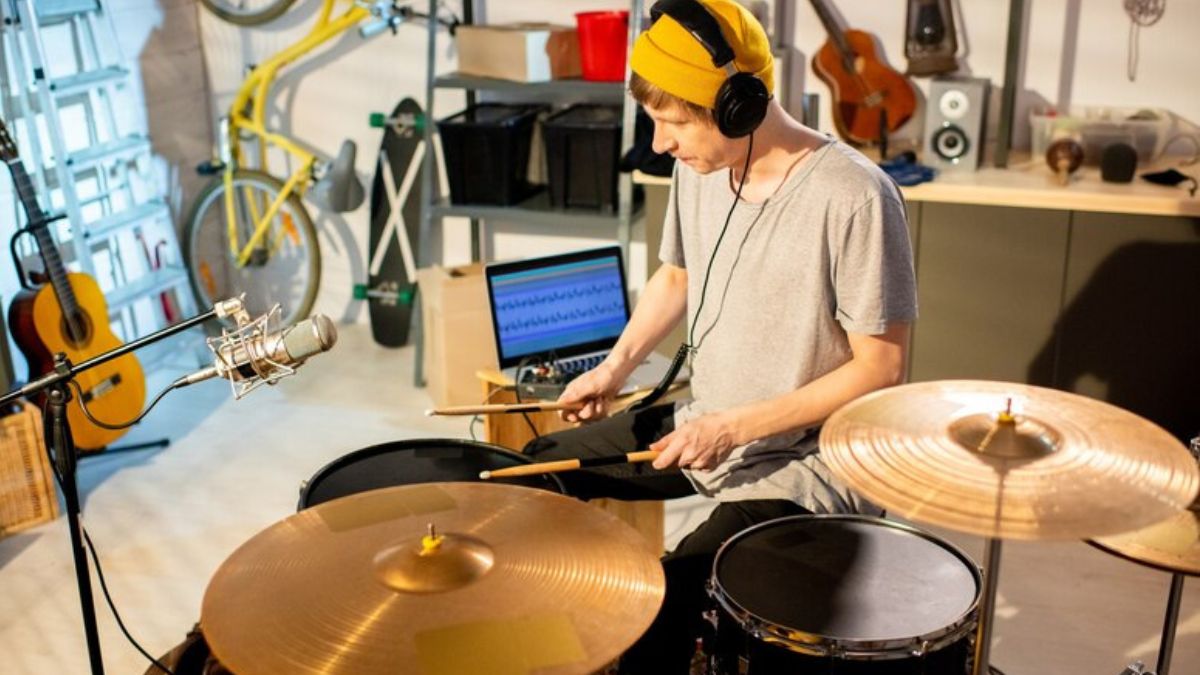INFORMATION
Mastering Landscape Photography: Top Tips for Capturing Breathtaking Scenes

Whether you are photographing a calm lake, a dramatic coastline, or a mountain range, Mastering Landscape Photography enables you to capture the beauty of nature in breathtaking detail. Here are some crucial pointers to remember in order to produce stunning landscape photographs.
Choose the Right Time of Day
The “golden hours”—the period immediately after sunrise and before sunset—offer the greatest lighting conditions for Mastering Landscape Photography. These are the moments when your images will have depth and extended shadows because of the low, warm, and soft light. Alternatively, the harshness of midday sunlight can blur details. Look for shade if you are shooting during the middle of the day, or wait for a cloudy day to get more diffused light.
Use a Tripod
For landscape photographers, stability is especially important when using slow shutter speeds to capture details in poor light. Using a tripod can help you avoid camera shake and maintain clear, crisp photos. This is especially crucial when utilizing a small aperture to get a deeper depth of field, as doing so frequently calls for a slower shutter speed. You can concentrate on composition and not worry about movement with a robust tripod.
Compose Thoughtfully
When photographing landscapes, composition is crucial. For a more dynamic photo, place your subject off-center according to the rule of thirds. Rather than placing your horizon exactly in the center of the frame, place it one-third from each side. Paths, rivers, and ridges are examples of leading lines that can direct the viewer’s attention through a subject and give your picture more depth and intrigue. To provide dimension and scale, pay attention to your background, foreground, and midground.
Maximize Depth of Field
Use a tiny aperture (higher f-stop, such f/8 or f/11) to capture every feature of a landscape in crisp clarity. This guarantees a deeper depth of field, maintaining attention on the background as well as the foreground. You can capture photographs with remarkable clarity from close range by using a tiny aperture along with the appropriate focus point. Do not go too high, though, like f/22, as this could cause diffraction and lessen the quality of the image.
Focus on the Foreground
Including captivating foreground components, such flowers, pebbles, or reflections, gives the picture a feeling of size and draws the audience in. By using this method, the scenery appears more three-dimensional and the experience becomes more immersive. Give importance to the things nearest to the camera by focusing on the foreground, and then let the remainder of the landscape fade into the distance.
Experiment with Filters
Photos of landscapes can be significantly improved using filters. ND filters enable long exposures in bright light, while polarizing filters enhance contrast and reduce glare.
Pay Attention to Weather
Photography of landscapes is greatly influenced by the weather. Do not be afraid to take pictures under a variety of lighting and cloud situations. Often, the most dramatic images are captured during or just after a storm, when these elements can accentuate the drama and ambiance of the subject. In addition, fog, rain, and snow give landscapes their own distinct textures and moods. Always be ready for conditions to change, and adjust your settings appropriately.
Post-Processing
Editing is a key step in enhancing your landscape images. To get the most out of your photos, adjust the exposure, contrast, and color balance. Adjust highlights and shadows to create depth, and if needed, think about cropping or straightening. Aim for a natural look while editing; although it is tempting to overprocess, small changes can produce the most dramatic effects.
Conclusion
It all comes down to perseverance, imagination, and a sense of composition and light in Mastering Landscape Photography. By timing your shots, using tools like tripods and filters, and focusing on composition, you can capture stunning photographs of nature. Try experimenting with various settings and viewpoints without fear, and keep in mind that post-processing might improve your finished photos. You may create outstanding landscape shots and establish your own style with perseverance and experience.
FAQs
What is the best time of day for landscape photography?
The “golden hours,” which are the moments shortly after sunrise and before sunset when the light is warm and gentle, are the greatest.
Why is a tripod important for landscape photography?
Sharp, crisp photos are ensured by the stability that a tripod offers, particularly when utilizing slow shutter speeds.
What aperture should I use for landscape photography?
For the purpose of optimizing depth of field and maintaining focus on the foreground and background, a narrower aperture—f/8 or f/11—is recommended.
How can I make my landscape photos more dynamic?
To enhance depth and interest, make use of the rule of thirds, leading lines, and captivating foreground features.
What filters are useful for landscape photography?
A neutral density (ND) filter permits extended exposures in bright light, whereas a polarizing filter minimizes glare and brings out color.
INFORMATION
Breast Cancer Awareness: Why It Matters

One of the most prevalent malignancies impacting women globally is breast cancer. In order to increase the chances of survival, early identification of breast cancer requires more public awareness. Although a lot of people have heard about it, not everyone is aware of its significance or how important routine examinations and screenings are.
What is Breast Cancer?
Uncontrollably growing aberrant cells in the breast lead to breast cancer. These cells may combine to form a tumor, which doctors often detect as a lump or identify through imaging studies such as mammography.Men can also get breast cancer, however it is far less common among them. Breast cancer is largely a female disease.
Why Awareness is Essential
In the battle against breast cancer, early detection is crucial. Breast cancer is frequently easier to treat and control when discovered early. For this reason, clinical breast exams, mammograms, and routine self-examinations are encouraged via awareness campaigns.
Many individuals are unaware that in its early stages, breast cancer may not cause any symptoms, thus you may not feel any lumps or notice any indicators. Frequent screening helps detect cancer before it spreads or worsens, improving the prognosis for individuals who are diagnosed and can receive effective treatment.
Symptoms to Look Out For
While not all cases exhibit symptoms, the following are some typical indicators that may point to the existence of breast cancer:
- A breast or underarm bulge or bulk
- Modifications to breast size or form
- Skin dimpling that resembles an orange peel
- Breast milk-related breast discharge
- Skin on the breasts or nipples that is red or scaling
Risk Factors
Although breast cancer can strike anyone, the following factors raise the risk:
Age: Most victims are over-50-year-old women.
Family history: The chance is raised by a close relative who has breast cancer.
Genetics: mutations that are inherited, like those in the BRCA1 or BRCA2 genes.
Lifestyle factors: Alcohol use, poor diet, and inactivity are further factors.
The Importance of Regular Screening
How to Support Breast Cancer Awareness
There are lots of methods to raise awareness about breast cancer. It can make a big difference to walk, donate to cancer research organizations, or just share the word. Another strategy for promoting early detection is to encourage the women and men in your life to get screened.
Conclusion
Although breast cancer is a major health problem, early detection and awareness campaigns can save lives. Comprehending the potential hazards, indicators, and significance of routine examinations enables individuals to assume responsibility for their well-being. We have the capacity to save more lives the more awareness we raise.
FAQs
What are the early signs of breast cancer?
A breast or underarm lump, alterations in breast size or shape, skin dimpling, and atypical nipple discharge are examples of early symptoms.
Can men get breast cancer?
Yes, although it is uncommon, breast cancer can strike men as well. Men should also be conscious of any changes in the tissue surrounding their breasts.
At what age should I start getting mammograms?
Although most physicians advise starting mammograms at age 40, some women may need to begin sooner if they have greater risk factors. See your physician for specific guidance.
How can I reduce my risk of breast cancer?
You can reduce the risk by leading a healthy lifestyle, exercising regularly, consuming less alcohol, and scheduling routine screenings.
Is breast cancer curable if detected early?
Yes, breast cancer is usually very curable with higher results and survival rates when caught early. Screenings on a regular basis are essential to early detection.
INFORMATION
Baseball vs. Softball: What’s the Difference?

The two most well-known bat-and-ball sports that immediately spring to mind are Baseball vs. Softball. They could appear to be nearly identical at first look. They all feature teams, a pitcher, hitters, bases, and scoring runs, therefore there are a lot of similarities between both. But if you look a little closer, you will see that the two are really different from one another. Let us dissect it and investigate the differences between these two cherished sports.
The Basics of Baseball and Softball
Field Size and Dimensions
The size of the field is one of the most obvious distinctions between baseball and softball. Softball bases are spaced just 60 feet apart, while baseball bases are typically 90 feet apart on larger grounds. This distinction affects how the game is played, with softball requiring players to react more quickly and at a faster tempo.
The Ball Size
It is possible that you have observed the size difference between softballs and baseballs. The circumference of a softball is around 12 inches, whereas that of a normal baseball is approximately 9 inches. Softball has unique gameplay characteristics because of the way the ball is pitched, hit, and fielded in relation to its size.
The Weight and Texture
The softball gets its moniker from being significantly softer in addition to being larger. It is slightly easier to hold thanks to the additional softness, especially while throwing or catching at a fast speed.
Pitching Differences
Underhand vs. Overhand Pitching
The way the ball is pitched in the two sports is arguably one of their most recognizable distinctions. Pitchers in baseball can throw the ball with more velocity and curve by using an overhand or sidearm motion. Conversely, pitchers that specialize in softball throw the ball underhand. Although it might appear that this would slow down play, professional pitchers can throw softball pitches at astounding rates of up to 70 mph!
Pitching Distance
There are also notable differences in the distances between home plate and the pitcher’s mound. This distance is 60 feet 6 inches in baseball and only 43 feet in softball. Because of the shorter distance and underhand pitching approach, softball batters have far less time to react to a pitch.
The Bat and Swing
Bat Size
Bats used for softball and baseball also differ. Softball bats are often shorter and lighter than baseball bats, which are typically longer and heavier. While softball bats typically have a maximum length of about 34 inches, baseball bats can go up to 42 inches in length.
Swing Technique
Softball swings differ from baseball swings in that they are typically more compact and controlled due to the size of the ball and pitching methods. This gives both attacking and defending an additional level of strategy.
Game Duration and Scoring
Inning Differences
Softball games are normally played over seven innings, while baseball games last nine. Although it might not seem like much, softball games are shorter, which means there is less time for major scoring rallies or comebacks, making every inning even more crucial.
Run Scoring
Baseball vs. Softball In both sports, runs are scored by batters hitting the ball and sprinting around the bases. However, compared to baseball, softball games often have lesser scoring totals because of the larger ball and smaller field, which makes it more difficult to hit home runs.
Popularity and Participation
Gender and Age Demographics
Major League Baseball (MLB) and other professional leagues dominate the pinnacle of the male-dominated baseball world. While there are men’s softball leagues as well, softball is more popular among female athletes, especially in high schools and universities.
International Appeal
There are fans all around the world for both softball and baseball, but baseball is more popular, particularly in nations like the Dominican Republic, Cuba, and Japan. In the US, people widely like softball and play it at various levels, from competitive college teams to recreational leagues.
Equipment and Safety
Protective Gear
Similar safety equipment is needed for both sports, such as gloves for fielders and helmets for hitters and catchers. To protect themselves from the bigger, faster ball, softball players, especially in youth leagues, frequently don extra face masks.
Injuries
Although there is a chance of damage in both activities, the kinds of injuries differ. In softball, players’ close closeness to one another and the fast-paced nature of the game can lead to injuries, but in baseball, high-speed pitches and powerful swings are frequently the cause of injuries.
Conclusion
Although there are many similarities between Baseball vs. Softball, there are also distinctions in pitching, gameplay, and field size that might appeal to various kinds of players. Softball may be your sport if you would rather play a smaller-field sport that prioritizes teamwork, speed, and accuracy. However, baseball might be a better option if you like strong hits, clever pitching, and a bigger field of play. Ultimately, millions of people around the world adore these sports because they present distinct challenges and thrills.
FAQs
Can men play softball?
Sure, men play softball, and they do! There are numerous men’s leagues worldwide, despite the fact that women play it more frequently.
What’s harder: hitting a baseball or a softball?
Both the player’s skill and the pitching style are factors. Although softball requires a quicker reaction time than baseball, hitting the smaller ball can still be challenging.
How fast do softball pitches go?
Pro softball pitchers can throw the ball as fast as 70 mph, but the hitter will perceive the ball as going even quicker due to the shorter pitching distance.
Why are baseball games longer than softball games?
Softball games normally go seven innings, but baseball games last nine, which accounts for the disparity in total game time.
Which sport is more popular: baseball or softball?
While softball is more popular in the United States and among female athletes, baseball is still the more popular sport worldwide.
INFORMATION
Band Assistant NYT: Enhancing Music Education Through Technology

Education is not an exception to how technology has transformed every part of our life. The Band Assistant NYT is unique among the plethora of technologies created to support learning, particularly for music instruction. The New York Times (NYT) has acknowledged and praised the Band Assistant, who is revolutionizing the way that music is taught and studied in classrooms. But what is this technology exactly, and why is the educational sector taking notice of it?
What is the Band Assistant?
An inventive digital application called The Band Assistant was created to help students and teachers in music education. Its main goal is to simplify the educational process so that students can learn and practice music more easily and teachers can focus more on teaching classes. The goal of the Band Assistant’s interactive feature set is to improve music education as a whole.
The Role of NYT in Promoting Band Assistant
The New York Times has long been a supporter of innovative teaching practices, regularly highlighting resources and innovations in technology that aim to enhance student learning. Because of their coverage of the Band Assistant, this technology has received a lot of attention and has the potential to completely transform music instruction. The New York Times has contributed to increasing the Band Assistant’s visibility and legitimacy by publishing success stories and professional viewpoints.
Benefits of Using Band Assistant
For Teachers
The Band Assistant has a lot to offer teachers. It provides a variety of tools and resources to improve the effectiveness of lesson planning and implementation. Teachers can monitor student progress and provide tailored comments by utilizing interactive tutorials and performance tracking.
For Students
The Band Assistant makes learning more interesting and participatory for the students. Practice sessions are more productive and pleasurable when using the tool, which offers tailored learning pathways. The provision of virtual rehearsals and real-time feedback guarantees that students maintain their motivation and consistently enhance their talents.
For Parents
Parents can continue to support their child’s musical endeavors. With the help of the Band Assistant, parents can monitor their child’s development, see virtual performances, and determine which areas their child needs more help or practice.
How Band Assistant Works
It’s simple to set up the Band Assistant. It easily combines with the current school systems after installation. Both teachers and students will find the user interface to be intuitive and user-friendly. While students can access these courses from their devices, practice, and get immediate feedback, teachers can create and assign lessons.
Features of Band Assistant
Interactive Tutorials
A collection of interactive tutorials covering a range of instruments and musical topics is available from The Band Assistant. The goal of these tutorials is to assist students study at their own pace by making them interesting and educational.
Performance Tracking
Educators can keep an eye on their kids’ progress by using comprehensive analytics. Teachers may adjust their lesson to meet the needs of each individual student thanks to this tool, which tracks practice time, accuracy, and improvement over time.
Virtual Rehearsals
The Band Assistant’s capability to run virtual rehearsals is one of its best features. Online practice allows students to mimic the atmosphere of a live band rehearsal. This is especially helpful in circumstances involving remote learning.
Feedback and Assessments
During practice sessions, the tool offers real-time feedback. Pupils get instant feedback on how they performed, which enables them to make corrections and advance more quickly. Teachers can also administer tests and write thorough evaluations.
Impact on Music Education
Improved Learning Outcomes
Better learning outcomes are a result of the Band Assistant’s tailored and interactive features. When compared to students who employ traditional approaches, students who frequently use the tool demonstrate a considerable improvement in their musical ability.
Increased Student Engagement
The gamified elements and interactive features of the Band Assistant keep students engaged. Learning becomes fun and dynamic, which is crucial for maintaining student interest and motivation.
Personalized Learning Experiences
The Band Assistant recognizes that each student learns differently and provides individualized learning routes to accommodate this fact. This guarantees that every student receives the guidance and materials required for their success.
Case Studies and Success Stories
After using the Band Assistant, a number of schools have claimed success. Instructors have observed improved interest and performance from their students. Student testimonials demonstrate how the tool has reduced intimidation and increased enjoyment of music education.
Comparing Band Assistant with Traditional Methods
Advantages over Conventional Teaching
Band Assistant NYT has a number of benefits over conventional training techniques. It gives students a more dynamic and interesting learning environment, enables tailored education, and facilitates teachers’ ability to monitor and evaluate students’ progress.
Challenges and Limitations
There are drawbacks to the Band Assistant even with its many advantages. Sometimes, technical difficulties make learning more difficult, and not all teachers and students may pick up on new technologies quickly. But generally speaking, the benefits of the instrument exceed these drawbacks.
The Future of Band Assistant
The band assistant appears to have a promising future. This tool will develop with technology, adding new features and enhancements as it goes. Its future integration with other educational platforms and resources will only increase its potency as a tool for music educators.
Getting Started with Band Assistant
It’s simple to get going with the Band Assistant. There are many tools available to assist educators and students in becoming up to speed, and the installation process is straightforward. Making frequent use of the performance tracking features and interactive tutorials are two suggestions for optimizing the tool’s potential.
Overcoming Challenges
Technical Issues
The Band Assistant may have technical problems, just like any other digital tool. Nevertheless, basic troubleshooting techniques will usually solve most issues, and the support staff is always on hand to assist.
Adaptation and Training
Some educators and students may find it difficult to adjust to new technologies. To ensure that everyone can take advantage of the technology, it can be easier to make this change by offering sufficient training and resources.
The Cost of Band Assistant
The Band Assistant provides a range of pricing options to meet diverse needs and financial constraints. Even while there is an initial expense, the benefits it offers in terms of enhanced efficiency and learning outcomes make the investment beneficial.
Conclusion
When it comes to teaching music, The Band Assistant is revolutionary. It offers a more effective, efficient, and interesting method of teaching and learning music by utilizing technology. This technology, which the New York Times acknowledged for its potential, is going to be a very useful tool for both students and music professors. The Band Assistant is a valuable investment in your musical journey, whether you’re a student keen to advance your skills or a teacher trying to enhance your sessions.
FAQs
What instruments does the Band Assistant support?
Wind, string, and percussion instruments are just a few of the many instruments that the Band Assistant may support.
Can the Band Assistant be used for individual practice?
Yes, both individual practice sessions and group rehearsals are intended uses for the Band Assistant.
How does the Band Assistant track student progress?
The application generates thorough progress reports by tracking practice time, accuracy, and improvement through the use of sophisticated analytics.
Is the Band Assistant suitable for beginners?
Of course! From novices to experts, The Band Assistant has tutorials and classes to suit every ability level.
What support is available for users?
A comprehensive support network of online tools, troubleshooting manuals, and a helpful customer care staff is available to users.
-

 Celebrity12 months ago
Celebrity12 months agoJulia Rejean Moorhead: A Trailblazer in Her Field
-

 News12 months ago
News12 months agoThe Ever-Evolving World of News:Global Events Unfolding Today
-

 INFORMATION12 months ago
INFORMATION12 months agoUnderstanding Information: Its Role and Impact in Our Lives
-

 Sports12 months ago
Sports12 months agoGonzaga Basketball: The Rise of a College Hoops Powerhouse
-

 Sports12 months ago
Sports12 months agoThe Incredible Benefits of Sports: Boost Your Life on All Fronts
-

 Business12 months ago
Business12 months agoRogue Trader Rotate Grand Strategist:The Dynamic World of Trading
-

 Technology9 months ago
Technology9 months agoFascinating Facts About Astronauts:The Ultimate Guide
-

 Health12 months ago
Health12 months agoThe Ultimate Guide to Health: Tips and Strategies for a Healthier
